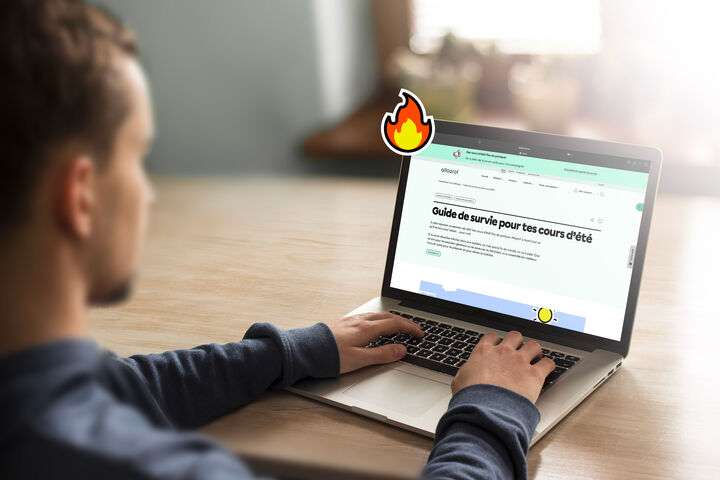Après la mise en place d’un enseignement à distance d’urgence au printemps dernier, outre l’aspect matériel, l’une des principales difficultés auxquelles l’on fait face maintenant (et ce, partout dans le monde) est la nécessité de maîtriser pleinement ce qu’est le véritable enseignement à distance.
Qu’on ne s’y trompe pas, le « véritable » enseignement à distance se prépare, se scénarise et ne se limite pas au simple envoi de fichiers d’exercices à ses élèves suivi de leur correction.
En classe, on s’attend à ce qu’un enseignant utilise le renforcement positif, donnant graduellement des conseils pour faire progresser ses élèves et faisant des retours sur leur travail. Seulement voilà, avec la distance, les choses se compliquent. Voici trois pistes tirées d’expériences personnelles pour améliorer ce point décisif.
1. La rétroaction régulière
Identifiez si l’espace de travail numérique ou l’application que vous utilisez pour enseigner à distance propose un moyen simple de donner de la rétroaction aux élèves. Dans la plupart des cas, les développeurs auront veillé à inclure ce point important.
Si l’application propose une rétroaction/correction automatique d’exercices, assurez-vous que les étudiants comprennent comment la consulter et comment s’en servir comme levier pour aller plus loin.
Par exemple, via l’application FlipGrid : l’enseignant a la possibilité de commenter les réponses de ses élèves à l’aide de petites vidéos, tout en se basant sur des critères d’évaluation préalablement encodés dans l’application.
2. Les badges
Votre espace de travail numérique possède-t-il un système de badges, de niveaux à atteindre? Ce genre de système stimule la motivation de l’élève en rendant ludique le suivi de la progression des apprentissages, et peut s’utiliser en classe comme à distance. Les amateurs de Classcraft, par exemple, sont familiers avec le principe puisque les badges font partie de son mécanisme.
Pour les utilisateurs de Microsoft Teams, cette fonctionnalité est également présente via l’option « Praise », quoique dans une moindre mesure. En effet, se voir décerner un badge « Trouve toujours une solution », par exemple, offrira ce renforcement positif recherché.
3. Le pouvoir du GIF
Là où le véritable contact social en présentiel permet de faire passer bon nombre d’émotions, l’enseignement à distance (et encore plus en mode asynchrone) affaiblit la chimie qui s’installe entre l’enseignant et ses élèves. Ne sous-estimez donc pas le pouvoir du GIF (ces images animées qui parlent par elles-mêmes) et du smiley (émoticônes). Certes, ils ne remplaceront pas votre vrai sourire, ni votre petite blague à la suite d’un encouragement, mais ils joueront sur les codes de communication des élèves, en plus de rendre l’interaction numérique moins « froide ».

Pour aller plus loin afin de comprendre ce qu’est le véritable enseignement à distance, on vous invite à consulter cette publication de l’Université Laval qui résume les informations essentielles et les caractéristiques de cette méthodologie.
Consultez aussi ici tous les articles de l’École branchée à propos de l’enseignement à distance.






